The word “Charterer” is probably as old as the word “Ship” itself.
Do you keep hearing this word so regularly?
Well, who doesn’t?
From seafarer’s point of view, it is so much important to understand these terms.
Why?
From commercial point of view, it is the moral responsibility of the seafarers to ensure that the ship owner profits from the ship operation.
And for this reason, we must understand when and where our loyalties lies.
But sometimes it becomes difficult to get a hang of all of it.
Not anymore.
In this blog, we will discuss about the terms charterer and charter party agreement.
Concept of Charter party agreement
It is all business.
And like in all kind of business, there are at least two parties involved, one of which provide a service or product to the other for a price.
With respect to carrying the cargo onboard the ships, these two parties are,
1) Ship owner who has the ship and provide the space on the ship to carry the cargo.
2) Shipper who has the cargo and wants a ship to transport the cargo
Then where does the term charterer fits into this?
Charterer is the party that has chartered (think of simple word “hired”) the ship.
If the shipper has chartered the entire ship then shipper will also be the charterer.
In most of the cases, charterer is a kind of middle man between shipper(s) and shipowners
This is particularly the case if there are more than one shipper.
For example, if the vessel is to load 50000 tons of cargo, there could be 10 shipper, say each of them with 5000 tons of cargo.
Alone none of the shippers would want to hire the entire vessel of 50000 tons capacity for their 5000 tons of cargo.
So they contact a charterer for transporting their cargo.
The charterer’s job is to find a vessel for the cargoes they have from different shippers and maximazing the space on ship they plan to hire.
Charterers may not be the only person involved in filling the gap between shipowner and shipper.
Sometime there are some other companies or persons who help shipper, charterer and shipowner to connect with each other for a fees.
They are called “Brokers”.
So the shipper’s broker is the person or company that help shipper find a charterer for a fees called brokerage.
And charterer’s broker is the person that help charterer find a ship to hire.
The charterer may even have brokers for different purpose. For example charterer may have a broker to find a cargo for the ship they want to hire and they may have another broker to find a ship for the cargo they have in hand.
Broker or no broker, the charterer and shipowner would agree on the terms and conditions which would form “Charter party agreement“.
Charter party agreement is a detailed document which, apart from various clauses, has informations such as
- When and where the vessel is required to be
- the freight agreed
- If the broker was used, who need to pay the brokerage fee and how much
Even though shipowners is primarily dealing with the charterer, it does not mean that the shipowner would have no relation with the shipper.
Shipper and shipowner are connected by the “carriage of cargo at sea act”, also called COGSA.
And one of the main point of it is that shipowner is required to issue bill of lading to the shipper for the cargo loaded onboard.
And with that each of the shipper have entered into an agreement with the ship owner which is called “Contract of carriage”.
While the “charter party agreement” is a formal agreement, the contract of carriage is governed by various laws and regulations such as Hague-Visby rule.
Charter party agreement supplement the contract of carriage.
Usually you would find a mention of the charter party agreement in the bill of lading. The wording in the bill of lading could be something like this.
This shipment is carried pursuant to charter party agreement between “Charterer’s name” and “Carrier’s name” and all the terms, clauses, conditions, liberties and exceptions whatsoever contained therein are incorporated into this bill of lading.
But do the shipowners and charterers do this exercise of negotiating the format of the charter party agreement each time they do the business together.
Absolutely not. Hell, it would take a lot of time.
Instead they use pre-defined forms. These forms are developed by Independent International stakeholders such as BIMCO and INTERTANKO and are widely used in the shipping business.
There are different forms for different trades.
For example there is form SHELLVOY 6 for use in tanker trade and then there is form AMWELSH 93 for coal dry cargo chartering.
Also if a charterer and ship owner have done the business before, they use the same charter party agreement for the future shipments too.
For this reason, many a times even for a voyage in 2019, you may find the mention of charter party dated in 2016 or even before. In the bill of lading issued even in 2019 , it may read something like,
The shipment is carried pursuant to charter party agreement between “Charterer’s name” and “Carrier’s name” dated 01 January 2016…..
Now that we understand the concept of chartering, let us understand the different ways in which the ships can be chartered.
Voyage Charter, Time charter, Demise charter
There are different ways in which a charterer can charter (Hire) the vessel.
Charterer can charter the vessel for one voyage (Voyage charter), for a particular time period (time charter) or they can hire and run the vessel as if they are the owner of the vessel (Demise or bareboat charter).
In each type of charter, charterers and shipowners have different area of responsibilities.
Each type of charter is a subject in itself. So in this blog we will explore the voyage charter.
Voyage Charter
It should be clear from the name.
Under the voyage charter, the ship is hired from the ship owner for one voyage.
One voyage could consists of multiple load ports and multiple discharge port.
The best analogy to the term voyage charter is that with hiring an Uber for a ride from one place to the other, sometimes with multiple stops in between.
So when we hire an Uber, we hire just the cab. The cab driver is still under the instructions of Uber.
Similarly, under the voyage charter, the charterer has hired the ship’s cargo space. But the Master and crew still remains under the disposal and instructions of ship owner and ship managers.
When we hire a cab for a ride, we just pay the hire (pre-agreed or by the meter). We do not pay for or are not concerned about the fuel costs or the amount of fuel consumed.
Similarly, under the voyage charter, charterer is not concerned about the fuel consumption. The fuel costs are for the ship owners.
And when we hire an Uber, we do not pay for maintenance of the cab.
Similarly, under the voyage charter it is the ship owner who pays for the maintenance of the ship.
Whenever we have any doubt about anything under voyage charter, just think of this analogy of hiring the cab.
Most likely you will get the answer.
Laytime, Demurrage and despatch
Lord Diplock during one of the leading cases on Laytime described the voyage charter party comprising of four stages.
- Stage 1 is the loading voyage: The voyage from wherever the ship is to the loading port specified in the voyage charter party
- Stage 2 is the Loading operation: The loading of the cargo at the port of loading
- Stage 3 is the carrying voyage: The voyage from load port to the discharge port specified in the voyage charter party.
- Stage 4 is the discharging operation: The discharging of the cargo from the ship to the port of discharging as specified in the voyage charter party.
In the first and third stage, it is only the ship owner that need to perform. For example. ship owner is required to adjust the speed of the ship to arrive at the loading port within the agreed dates (Laycan).
And in the third stage, the ship owner is required to instruct the vessel to maintain the charter party speed.
However it is the second and fourth stage where most of the disputes take place.
Because in these two stages it is mutual reponsibility of the two parties to ensure that cargo loading and discharging is done without any delays.
In case of delays, each one can accuse the other for delays.
It is definately not commercially profiting for the shipowner if the voyage is extended beyond their expectations.
For example, what if the loading of the cargo took 15 days in comparison to just 2 days that shipowner had expected?
Or what if the ship could not berth at load port or discharge port for many days because of other ships ahead in line up?
Too many uncertainties.
But ship owner’s freight (and profits) cannot depend upon so many uncertainties.
So the shipowner and charterers agree on the factors like allowed number of days for loading and discharging.
In chartering terms this is called “Laydays” or “Laytime”.
The laydays is mentioned in the voyage charter party agreement between ship owner and charterer.
It could be mentioned as number of days and hours or as tons per hours or per day.
If the charterer uses more time for loading and discharging than the allowed laydays as per charter party agreement, then charterer is supposed to pay for extra time used.
The chartering term for this additional payment is “Demurrage”.
So we can say that if charterer uses more time for loading/discharging than laydays, they need to pay demurrage to the ship owner.
But if the charterer uses less time than laydays then ship owner need to pay the charterer for the time saved.
The chartering term for this is “despatch”.
Usually the agreed amount of despatch is about half of the agreed amount for demurrage.
Finally at the end of the voyage, a statement is made to shows the time saved and/or extra time taken at different ports.
Below is the simplified version of the laytime summary calculated at the end of the voyage.
This statement would also show the final amount due and to whom it is due. Means if the final amount is demurrage or despatch and how much.
Notice of readiness and statement of facts
For calculation of laytime, it is important to know when the laytime counting and calculation would start.
This information is also provided in the charter party agreement.
In most of the cases, the laytime would commence to start when the vessel has arrived at the port. In chartering term, this is called “Arrived Ship“.
Legally, a ship is considered as an ‘Arrived Ship” only when
- Ship has arrived at the port of loading or discharging (port voyage charter) or at the designated berth (Berth Voyage charter).
- Ship is ready in all respects to commence loading (or discharging) or the cargo, and
- Master has sent the notice of readiness to the all parties concerned
The charter party agreement contains the information if the voyage charter is a port voyage charter or a berth voyage charter.
Irrespective if it is port or berth voyage charter, from the ship’s point of view it is important that the master of the vessel send the notice of readiness.
Notice of readiness need to state that the vessel has arrived and she is ready in all respect to commence loading (or discharging ) of the cargo.
The laytime would start to commence at this time or sometimes few hours later if specifically mentioned in the charter party agreement.
Since one of the condition for the laytime to start is for the master to send the notice of readiness, it makes it so much of an important aspect.
Statement of Facts
The vessel and the master of the ship are the owner’s representative at the action site (loading port or discharging port).
Ship Owner would know only know the information that we provide them. They would use this information for calculation of any demurrage due to the charterers.
But for the correct demurrage calculation, the information we provide must be correct and we must not miss any important information such as any delays.
That make the statement of facts (commonly called SOF) an important document.
At the least, statement of facts must include
- any delays from shore side or from ship’s side and reason of delay
- any delays because of weather conditions
- Timings for the movement of the ship (such as times for anchoring, anchor aweigh, pilot onboard, NOR Tendered etc)
- Timings related to cargo operations (Commenced cargo operation and completed cargo operation
Master’s actions during voyage charter
Master and ship staff may not see the actual charter party agreement between the charterer and the ship owner.
And it is for their own benefit too.
Because there would be so many things in that which we seafarers are not concerned about.
But when the ship is fixed for the voyage charter, master will receive “Voyage instructions” from the charterer through the ship owner’s commercial team.
The voyage instructions contains the information from the charter party agreement that requires master’s attention and subsequent actions.
Master must not miss the points in the voyage orders that requires his actions.
One of the way to do it is to highlight the text of the voyage instructions that require his attention for easy follow up.
Once Master reads the voyage instructions, he may come across insufficient information that need more information or clarification.
Like this one in one of the voyage orders.
Clarification must be sought from the ship operator for any of such information in the voyage orders.
After all it just takes a simple email to get everything in place.
And once everything is clear and in place, it is just about following that.
Conclusion
There are may be only a handful of shipowners that do not rely on the charterer to find the cargo for their vessel.
Having the vessel on charter is so common.
And vessel can be chartered in different ways. Vessel can be on a voyage charter, time charter or demise/bareboat charter.
With respect to voyage charter, master and ship staff must understand few thing
First, when is the laycan for the vessel. This is period in which vessel must arrive at the load port.
If master thinks that vessel may not be able to make it to the loadport in laycan period, the commercial operator must be informed who can then try to extend the laycan.
Second, when the notice of readiness need to be tendered.
If the voyage charter is a port charter, NOR can only be tendered when vessel is at least within the port limits. Usually in this case NOR is tendered when pilot boards the vessel.
If the voyage charter is berth charter, the NOR can only be tendered when the vessel is alongside the designated berth.
Wrong tendering of NOR can make the Notice of readiness null and void and shipowner may loose tons of money.
Lastly, the ship staff need to be make sure that a correct record of statement of facts is kept. This is the document that is used for laytime calculations.
If the charterer uses more time than agreed for loading or discharging the cargo, the ship owner is supposed to get a pre-agreed compensation called demurrage.
Share this:

About Capt Rajeev Jassal
Capt. Rajeev Jassal has sailed for over 24 years mainly on crude oil, product and chemical tankers. He holds MBA in shipping & Logistics degree from London. He has done extensive research on quantitatively measuring Safety culture onboard and safety climate ashore which he believes is the most important element for safer shipping.
Search Blog
76 Comments


Many thanks for writing such articles with such an ease of understanding sir...

Glad you liked it Sukhchain...

Another good read. Thank you for taking time to write articles. All Seafarers must understand the commercial aspects of ships. All the best and I cant wait to read the next one.

Glad you liked it Marlon...

what if the ship could not berth at load port or discharge port for many days because of other ships ahead in line up?Too many uncertainties.But ship owner’s freight (and profits) cannot depend upon so many uncertainties.So the shipowner and charterers agree on the factors like allowed number of days for loading and discharging.In chartering terms this is called “Laydays” or “Laytime” ??? Laydays refer to the time when a ship must present itself to the charter.If the vessel arrives after the laydays ,than contract can be cancelled. -Laycan. Laytime is the amount of time allowed (in hours and days)in a voyage charter for the loading and unloading of cargo.

Thanks for your input Zibi...

Laydays or "Laycan "I think is the correct term not Laytime. :)

Thanks for such simplified explanations. Sir could you please tell the few famous ship brokers names in india and worldwide.

Interocean is one of them...

Thank Captain for simple & detailed explanation. Information is really worthy .

Glad you found it useful Sajjad...

Thanks Capt. Rajeev for this good information in simple way.

Glad you liked it Dharmdeep...

Very well written capt., pls continue the good work

Thanks Capt Pereira...

This is a scholarly article Great job Captain!

Glad you liked it Tunde...

Good job, Capt. Jassal! These mandatory intricacies of ship's business & chartering are excellently presented. Organized and laid out as you have, this blog subject does a great service to anyone who longs to learn more about it & be more familiar with the clauses, details & positions (which is probably everyone, right?) -- including this marine cargo surveyor!

Glad you liked it Capt Edward...

Many thanks

Thanks Rafik...

sir plz explain magnetic compass

I will do that in a different blog...

Once again thank you very much.

Thanks Raju...

Informative Awaiting next one regarding time charterers

Will write on Time chartering too...

many thanks for this jobs cap

Thanks...

How easy way for explain this matter ,really very good job captain I appreciate your good effort waiting more and more

Thanks Ahmed...

sir waiting for your blog on purging and gas freeing cargo tanks

Very nicely explained and written good effort

nice

Very nice explanation capt,

Generally the CP agreement is never sent to ship..and hence for tendering NOR what criteria(LOCATION) shall be followed as Master will not be aware if the C/P is voyage or Port C/P .These days Master tender NOR on arrival and then they keep re tendering every 24 hrs or at important events like POB, or All Fast.What is the logic behind following this and how we can ensure the NOR tendering doesn't becomes null and void. really APPRECIATE YOUR GREAT EFFORTS

if the vessel arrived at the agreed laycan and gave a valid NOR tendered and waited for almost 5 days before berthing, then while berthing the vessel had an accident and the owner requsted a new laycan, the question here is, does cancelling the old laycan result in canceling the demurrage fees caused by it?

When a vessel suffers breakdown typically NOR becomes invalid as the vessel was not in all respects ready to load her cargo.

U don't see such priceless articles often.. Good work cap. Let's make the world a better place to sail????????

To the writer of this blog- what made you write this? IT IS FANTASTIC. Well done. Also your MBA, was it the distant learning one from Middlesex?

On the Laytime Summary calculation, wouldn't it be correct to say that on the loading it was lost 0d-12h-24 min instead of 1d-00-24m?

Captain sahab, if I ever get a chance, I'll surely shake hand and say thank you, for all your efforts in simplifying the topics

can you advise for the following : in case a vessel is on Voyage Charter, and during loading or discharging alongside berth, there is a rainy period, so the daytime for this period should be NOT TO COUNT, correct??? cause there is the terms "weather permitting".

Great article sir......waiting for more.....

Hi. How does the shipbroker locate a suitable ship to transport the cargo?

Good day! You have mentioned different stages of voyage charter. May I ask what are the different stages of Time Charter and Bareboat Charter? Thank you in advance.

Nice blog...pleasure to read

I love your write up. Please, keep exposing our mind to the rudiments of shipping business.

Sir, in voyage charter party at what time and place charter party agreement will start? After ship arriving on laycan days or after giving notice of readiness? And notice readiness when we can give? Is there any specific time only we can give NOR?

I have a question, How to calculate the freight for a Multiport voyage. for example, there is a Cargo loaded from the country (C) and need to discharge its half portion in other countries multiple ports (A) & (B). For single port discharge, the cost is 8$ in port A and in Port B 11$, but the agent says he could fulfill this in 10$ for both ports. Now my question is how is he calculating the freight 10$ for Multiple port ?

Thank you sir for this great effort helping a lot for phase2 law preparation

Hi Sir! I am so pleased to have found your blog, it is absolutely helpful. if it is not too much to ask, do you have a quote sample for time and voyage charter? and the stardard terms and conditions? sorry if I am asking too much. thank you

Excellent blog about chartering service. This blog cleared my doubt about chartering service for ship

could you please advise that how long a shipowner should wait cargo to load on board (if cargo not ready) and no any specific clause written on voyage cp

Hi, Capt Jassal, I find every write up on any marine subject is excellent and easy to understand for students. I highly appreciate the contents of your blog. Regards Capt MK Srivastava , Ex-DPA, The SCI Ltd.

Wonderfully explained

While the blockchains themselves are secure, the applications running on the blockchain may not be. These applications interact with the blockchain through smart contracts, but just like any other software, bugs in the code can lead to security vulnerabilities. For this, we need to involve the auditors who conduct security audits on the smart contract. Smart Contract Audit helps you find hidden exploits and eventually reduce the risk and provide you an extra layer of security. Bug-free code is nice to have in other types of software, in blockchain applications, it is essential.

Dear Capt Rajeev Jassal, with interest i have seen your blog however the title struck me a bit - A Layman's Guide to Laytime - this sounds very familiar, if not accurate, with the dissertation i wrote for the ICS, Institute of Charterers Shipbrokers London, who hold copyright on this. Kindly amend the title of your blog to avoid confusion in the industry as to whom the readers take their information from. With best regards, Erwin de Zwarte, FICS

sir will you pls write on paramount clause , new jasson clause , cesser clause and both to blame collision clause

Such a great explanation! Thank you so much!

This article is a big help for those individuals that are trying to expound their knowledge in shipping. I much appreciated because at present i am taking my master's degree in ship management. Thank you...

Wow, so clearly written that I didn't have to read it twice to understand! Why don't our text books/ Oral notes be like this?! Thank you so much Capt. Jassal.

I must confess to you that im really in love with such a great content coming from you and the way you take to enduce your audience I do respect that so much. I will instantly get your lrss and stay informed of any updates you make and as well take the advantage to share some vital information regarding the.How to get a credit card numbers with cvv and zip code alongside a canadian passportbuy-clone-card-clone-card-for-salebuy-fake-bank-statement-buy-real-bank-statement expungement-criminal-record-north-carolinacounterfeit-money-for-sale

It’s a great and useful piece of info. I’m happy that you just shared this useful info with us. Please stay informed like this. Thank you for sharing. Here’s another informative content on Common Law Separation Agreement , may find more details here.

thanks alot of info keren bgt

Sir u r the best , undoubtedly . The confidence which i gain every time when ever I read your blog is just unspeakable and it sharpens my knowledge every single time. A teacher like you is what this shipping industry needs and I am glad to find the perfect one . Every time when ever I am in doubt I refer to your blogs and it works miracle .....thanks a ton to you sir .....simply great.

My ex-husband and I had always managed to stay friendly after our divorce in February 2017. But I always wanted to get back together with him, All it took was a visit to this spell casters website last December, because my dream was to start a new year with my husband, and live happily with him.. This spell caster requested a specific love spell for me and my husband, and I accepted it. And this powerful spell caster began to work his magic. And 48 hours after this spell caster worked for me, my husband called me back for us to be together again, and he was remorseful for all his wrong deeds. My spell is working because guess what: My “husband” is back and we are making preparations on how to go to court and withdraw our divorce papers ASAP. This is nothing short of a miracle. Thank you Dr Emu for your powerful spells. Words are not enough. Email emutemple@gmail.com Phone/WhatsApp +2347012841542.

I want to genuinely thank Dr Ayoola for making my dream come through. I was on the internet when I saw people posting and talking about Dr Ayoola. On How he has help them in winning lottery. My name is Gerald Muswagon this is my story on how I win $10 million After reading the article about Dr Ayoola I contacted him I told him to help me win lottery he respond to me by saying he will help me after working with him he assured me that I will win. Which I believe. After working with Dr Ayoola he gave me a number and ask me to go and play it which I did today I’m here shearing a testimony about this same man Dr Ayoola help me to win $10 million dollars all thanks to you Dr I will keep taking about your good because you are a man of your word I hope people that really need this will come across it for you to help them as well. If you want to win big in lottery contact Dr Ayoola today and be rest assured of winning contact him via email drayoolasolutionhome@gmail. com or https://www.facebook.com/Dr-Ayoola-105640401516053/ text or call +14809032128

Looking for Legit Fullz Vendor we got your back Providing Fresh Database of USA, UK, CANADA & many more Huge Discounts On Bulk Order Replacement For Bad & Invalid Info Payment Upfront In Crypto Connectivity Ratio 80-90% Service 24/7 ================================ | SSN SIN DOB Address Phone Email | SSN DOB DL Address Employment Bank Info & Routing number | UK NIN DOB DL Address Sort Code | SIN DOB Address MMN Phone Email | Real DL Scan Front back with selfie & SSN | PASSPORT PHOTOS | YOUNG AND OLD AGE FULLZ | EIN FULLZ | BUSINESS OWNER LEADS | PAYDAY & PERSONAL LOAN LEADS | FIRST HIT SWEEPSTAKES | CASINO LEADS | HOME OWNERS LEADS | EMPLOYEE LEADS | USA BANK LEADS | EMAIL, COMBOS & PHONE NUMBER LEADS | CRYPTO & FOREX LEADS | STOCK MARKET LEADS | CARS DATA BASE WITH REGISTRATION NUMBER | LOAN & CARDING METHODS ...AND MANY OTHER TOOLS & TUTORIALS =================================== Contact us 24/7: What\'s App – (+1605)(846)(1870) TG Chanel – t.me/bigdatatrader Tele gram – @ Fullzpros Email – harrynelson03(at)protonmail.com

Are you searching for a real spell caster ? It is amazing how quickly Dr. Excellent brought my husband back to me. My name is Heather Delaney. I married the love of my life Riley on 10/02/15 and we now have two beautiful girls Abby & Erin, who are conjoined twins, that were born 07/24/16. My husband left me and moved to be with another woman. I felt my life was over and my kids thought they would never see their father again. I tried to be strong just for the kids but I could not control the pains that tormented my heart, my heart was filled with sorrows and pains because I was really in love with my husband. I have tried many options but he did not come back, until i met a friend that directed me to Dr. Excellent a spell caster, who helped me to bring back my husband after 11hours. Me and my husband are living happily together again, This man is powerful, contact Dr. Excellent if you are passing through any difficulty in life or having troubles in your marriage or relationship, he is capable of making things right for you. Don\'t miss out on the opportunity to work with the best spell caster. Here his contact. Call/WhatsApp him at: +2348084273514 \" Or email him at: Excellentspellcaster@gmail.com , For more information visit his website:https://drexcellentspellcaster.godaddysites.com

CRYPTO SCAM RECOVERY SUCCESSFUL – A TESTIMONIAL OF LOST PASSWORD TO YOUR DIGITAL WALLET BACK. My name is Robert Alfred, Am from Australia. I’m sharing my experience in the hope that it helps others who have been victims of crypto scams. A few months ago, I fell victim to a fraudulent crypto investment scheme linked to a broker company. I had invested heavily during a time when Bitcoin prices were rising, thinking it was a good opportunity. Unfortunately, I was scammed out of $120,000 AUD and the broker denied me access to my digital wallet and assets. It was a devastating experience that caused many sleepless nights. Crypto scams are increasingly common and often involve fake trading platforms, phishing attacks, and misleading investment opportunities. In my desperation, a friend from the crypto community recommended Capital Crypto Recovery Service, known for helping victims recover lost or stolen funds. After doing some research and reading multiple positive reviews, I reached out to Capital Crypto Recovery. I provided all the necessary information—wallet addresses, transaction history, and communication logs. Their expert team responded immediately and began investigating. Using advanced blockchain tracking techniques, they were able to trace the stolen Dogecoin, identify the scammer’s wallet, and coordinate with relevant authorities to freeze the funds before they could be moved. Incredibly, within 24 hours, Capital Crypto Recovery successfully recovered the majority of my stolen crypto assets. I was beyond relieved and truly grateful. Their professionalism, transparency, and constant communication throughout the process gave me hope during a very difficult time. If you’ve been a victim of a crypto scam, I highly recommend them with full confidence contacting: 📧 Email: Capitalcryptorecover@zohomail.com 📱 Telegram: @Capitalcryptorecover Contact: Recoverycapital@fastservice.com 📞 Call/Text: +1 (336) 390-6684 🌐 Website: https://recovercapital.wixsite.com/capital-crypto-rec-1
Leave Comment
More things to do on myseatime

MySeaTime Blogs
Learn the difficult concepts of sailing described in a easy and story-telling way. These detailed and well researched articles provides value reading for all ranks.

Seafarers Question Answers
Ask or answer a question on this forum. Knowledge dies if it remains in our head. Share your knowledge by writing answers to the question

MySeaTime Podcast
This podcast on the maritime matters will provide value to the listeners. Short, crisp and full of value. Stay tuned for this section.


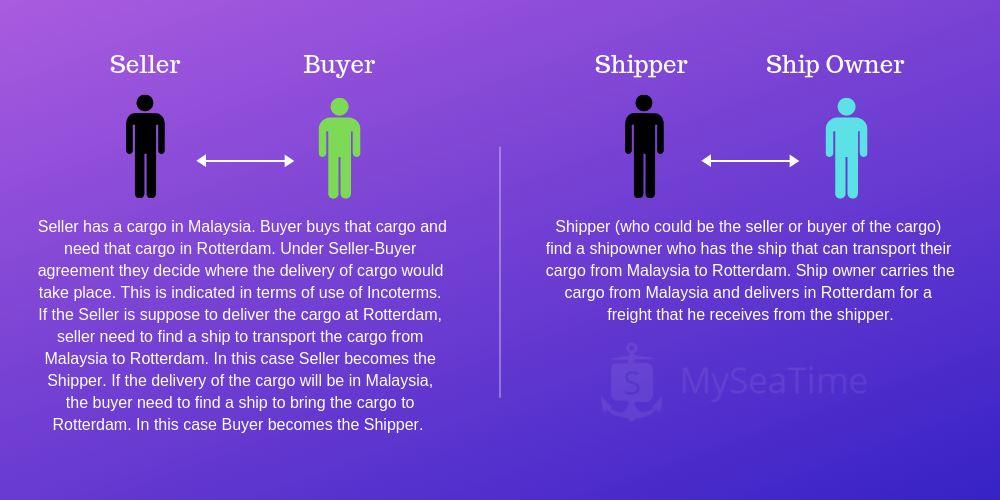
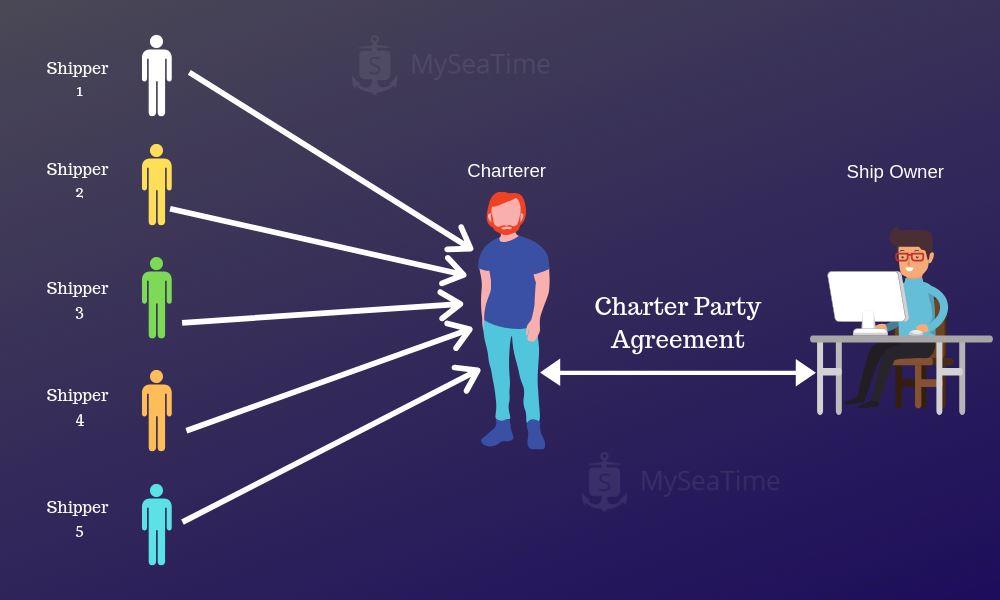
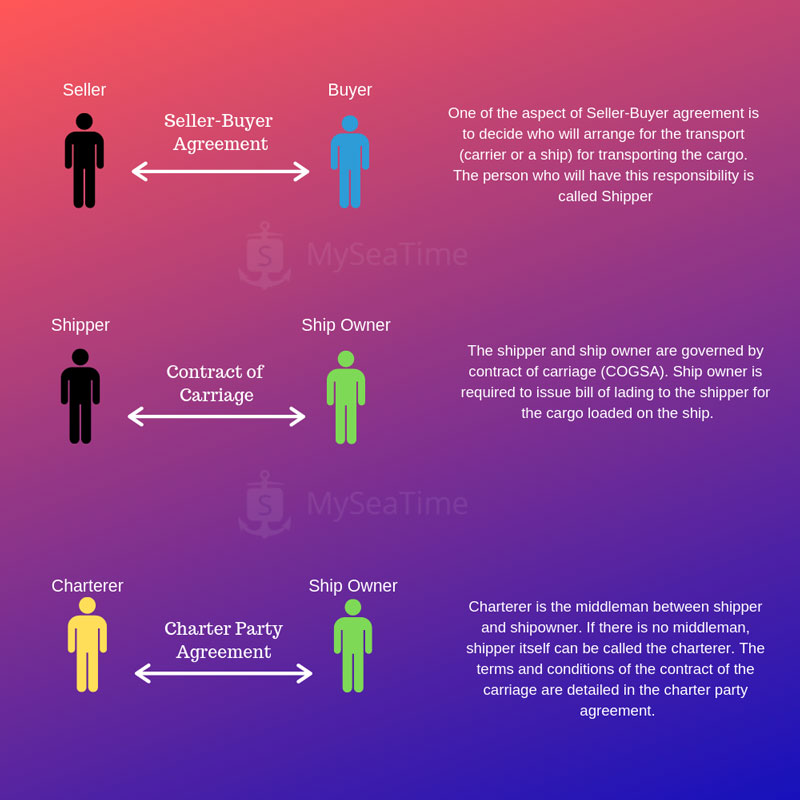
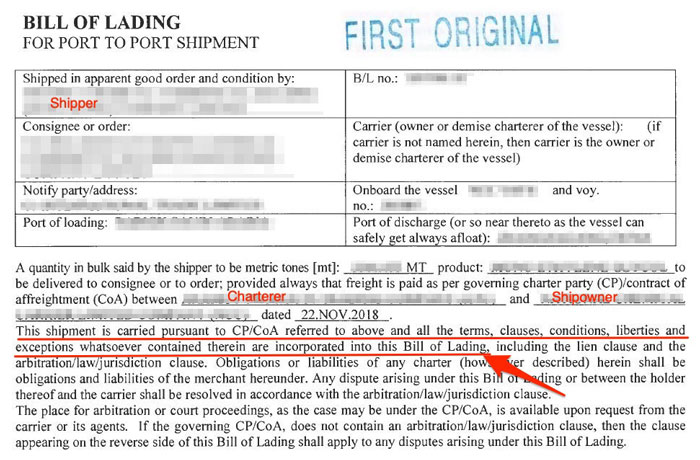
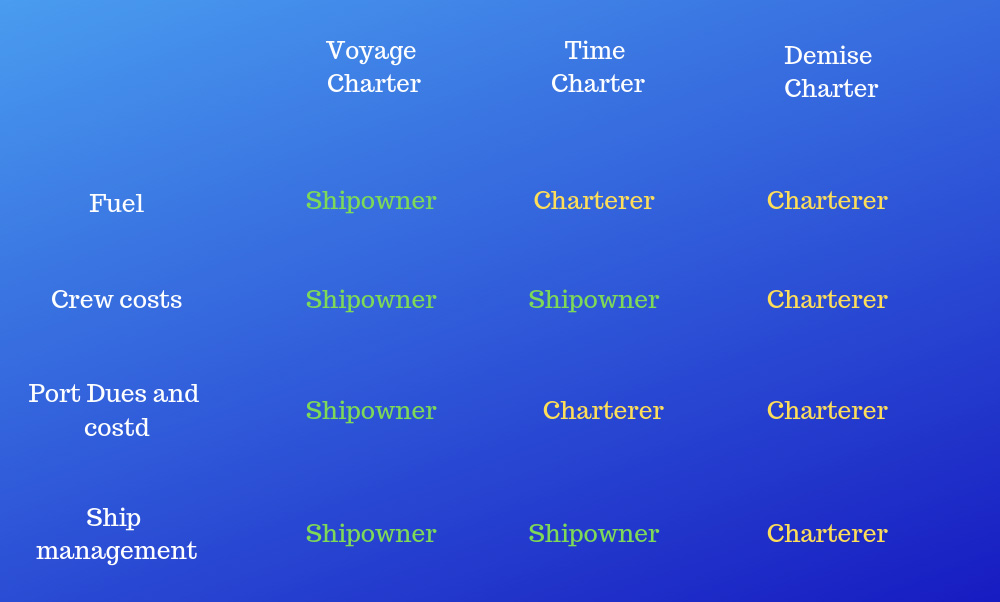
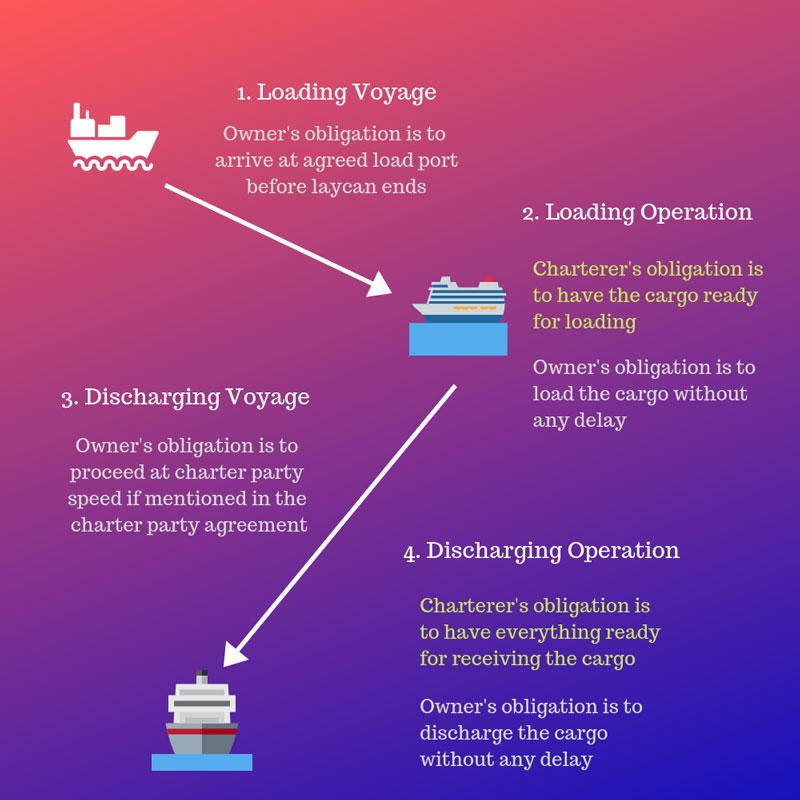
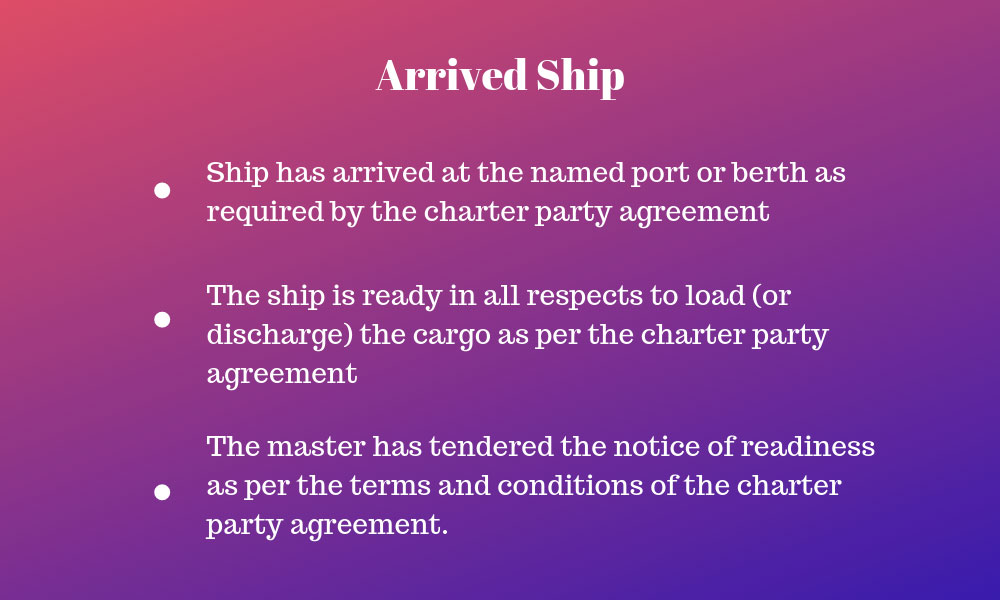
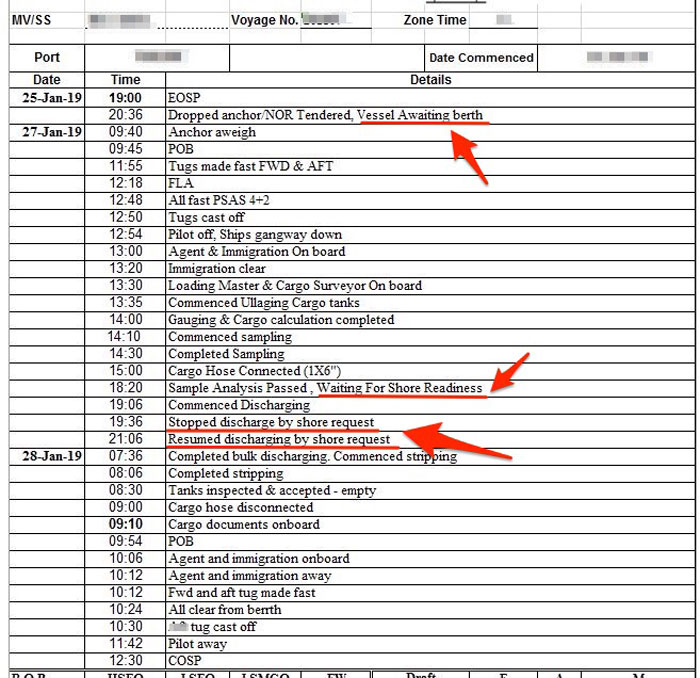
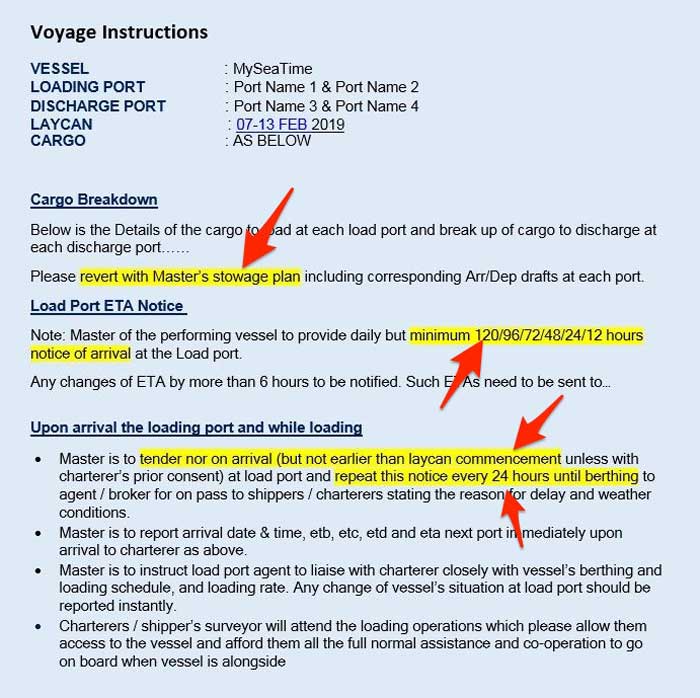
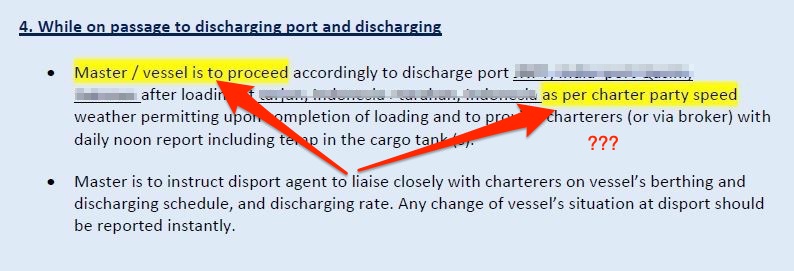
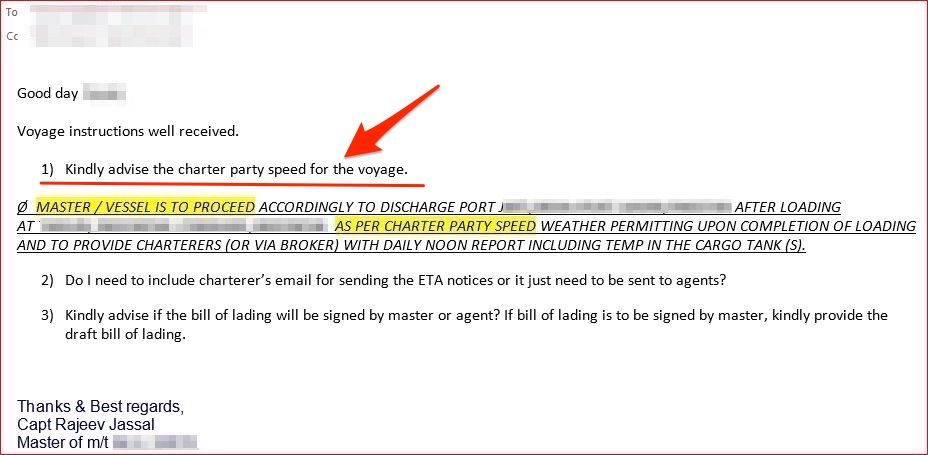
How i wish that our exam books were written so precisely yet so easy to understand .Thanx for all the pain you take .No amount of words would do justice to match the level of you efforts.
Thanks Alok...The readers liking it make all the hardwork worthwhile...
its amazing how you describe anything sir
what if the vessel is about to tender NOR and shipper cancels the order. what would be the penalty
Great article to understand the business with ease as an ASM candidate